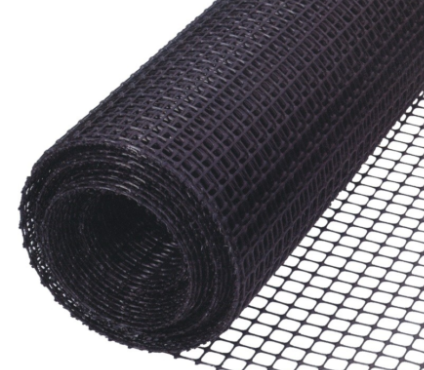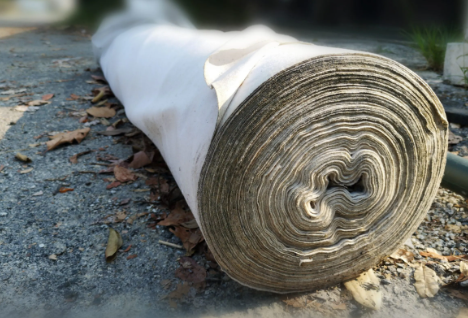- Understanding the Role of Geomembrane Liners in Waste Management
- Innovations in Geomembrane Liners for Water Management
- Geomembrane Liners: A Comprehensive Guide
- The Future of Geomembrane Liners in Civil Engineering
- Geomembrane Liners: Enhancing Landfill Stability
Manager:
WhatsApp:+86 177 0135 2670
Tel:+86 177 0135 2670
Email:marketing@okorder.com
Address:3rd Floor, No.2 Building, No.1 Sanlihe Road
When should you use geogrids rather than geotextile?
Geogrids and Geotextiles are both fundamental materials in civil engineering and construction. However, understanding when to use one over the other is crucial for ensuring optimal performance and cost-effectiveness in various projects. In this article, we'll delve into the specific scenarios where geogrids, including plastic geogrid, wholesale geogrid, fiberglass geogrid, and glassfiber geogrid, shine brighter than geotextiles.

Understanding Geogrids and Geotextiles
Before we explore the situations favoring geogrids, let's briefly differentiate between geogirds and getextiles.
Polyethylene or polypropylene fibers or fiberglass at grid-like form constitute most types of Geogrids. Their high tensile strengths as well as stiffness make them suitable for reinforcing soil aggregates among others.
On the contrary, nonwoven synthetic fibrous fabrics made from polyester or polypropylene are used in making Geotextiles. They can be used for filtration purposes while others can be used for separation purposes whereas some reinforce soils while shielding others provide drainage functionality such as moisture control or erosion prevention within soils.
Now let’s discuss some areas indicating that there are cases where it is better to use a geo-grid rather than a geo-textile material.
High Load-Bearing Applications
For example in case of road construction retaining walls and embankments where there is expectation of heavy loading; fiberglass grade grids as well as glass fiber ones excel due to their higher tensile strength hence their ability to withstand such loads with ease. The load spread by these grades grid across a wider area reduces pressure on underlying soil thus minimizing chances of structures failing.
In particular when constructing roads which must support heavy traffic loads exerting significant pressure on pavement structure; using fiber-glass geo-grid or glass-fiber geo-grid can improve the structural integrity and overall durability of roadbed.
Steep Slopes and Soil Stability
Geogrids provide greater reinforcement against geotextiles in instances involving steep slopes or unstable soil situations such as hillside stabilization and landslide mitigation. Plastic geogrids have rigidness that offers an excellent confinement with respect to soils to avoid erosion of soils thereby slope failures which may occur.
Wholesale geogrid is particularly helpful for large area projects like highway embankments or railroad ballast reinforcement owing to its availability on rolls at low cost. It is cheaper for the contractors who also feel it performs very well in order to save the money used in constructing huge areas involved in the project, but still wants the best results during construction.
Load Transfer Platforms and Pavement Systems
In weak subgrades, Geogrids help raise bearing capacity, reduce reflective cracking, thus enhancing fatigue life of pavements. They are usually used for distributing loads while preventing any form of pavement horizontal movement such as those found within fiberglass geo grid and glass fiber ones.
These Geo Grids interlock with aggregate course creating a firm platform which transfers wheel load evenly meaning fewer ruts formed as well as longer duration of such pavement in use. These are also chemically resistant hence they do not get rotten even if exposed to moist conditions unlike others.
Mechanically Stabilized Earth (MSE) Walls
In constructions involving retaining walls done using mechanically stabilized earth approaches; these walls rely on interaction between soil material and certain types of geosynthetic reinforcements so as to make them stable enough. In this case, fiberglass grade grids plus glass fiber grades offer better tensile strength together with soil confinement thus enabling taller more structurally sound walls to be built in this fashion.
These grids are commonly placed inside the reinforced soil mass at designed spacing’s towards providing internal stability by preventing sliding out or overturning. Such features allow for easy installations even around bends and other corners, thus ensuring that the entire MSE structure is uniformly reinforced by these fiber glass grade grids.

Conclusion
Geogrids and geotextile have very distinct functions in the civil engineering and construction industry. For instance, there are many instances where geogrids, both plastic or fiberglass including wholesale and glassfiber ones, tend to be more successful in terms of cost AND performance. The correct understanding of specific project requirements coupled with appropriate exploitation of this properties ensures that designers can boost their efficiency while making sure that infrastructure projects last long into the future.
- Previous:How do you calculate geogrid?
- Next:Is geotextile a root barrier?
-
2024-06-12Asphalt fiberglass geogrid construction plan
-
2024-06-04Asphalt fiberglass geogrid construction plan
-
2024-05-21What is the disadvantage of geogrid?
-
2024-05-21What is the lifespan of geogrid?
-
2024-05-21What are the 3 main uses of a geotextile?






